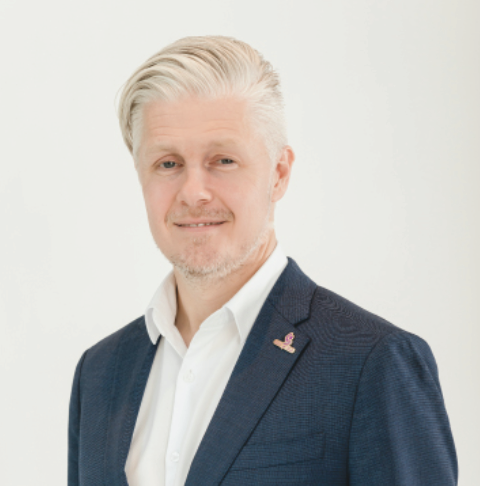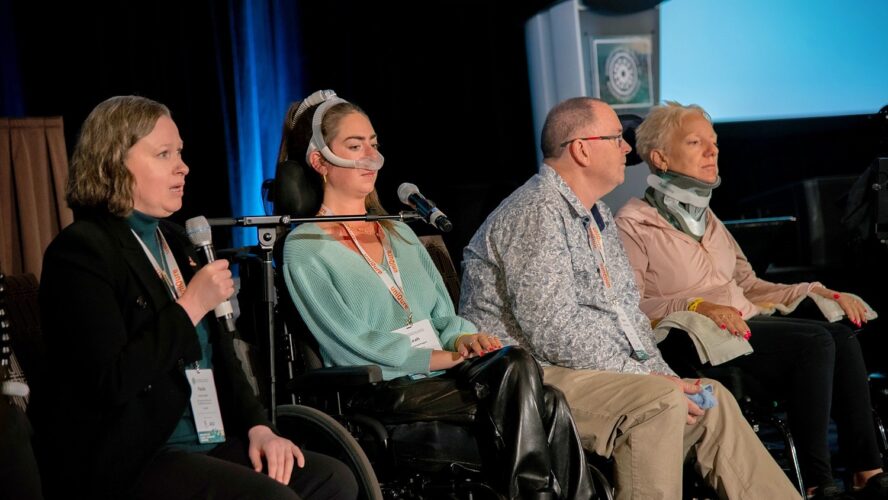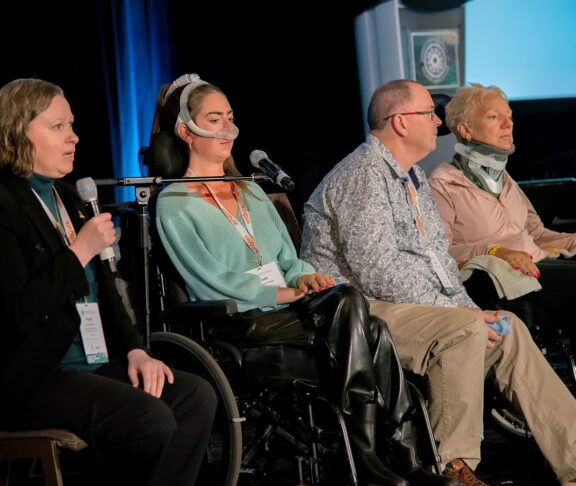The first-ever Health Canada-approved treatment for a specific genetic form of ALS is now available, but ensuring equitable access is critical.
Amyotrophic lateral sclerosis (ALS) is a progressive neurological disease that affects an estimated 4,000 Canadians. If that number doesn’t seem alarmingly high, it’s because the disease is so horrifically deadly: 80 per cent of patients die within two to five years of diagnosis.
“ALS is a disease where the living wires that connect your brain to your muscles — known as the motor neurons — degenerate and die,” explains David Taylor, Chief Scientific Officer at the ALS Society of Canada. “As this spreads throughout the body, people become paralyzed and lose the ability to move, speak, swallow, and eventually breathe. That’s why it’s a terminal disease, and it’s incredibly complex to treat.”

David Taylor
Chief Scientific Officer, ALS Society of Canada
Funding groundbreaking research
This complexity, Taylor explains, is because the brain and spinal cord function like an intricate internal computer, while an organ like the heart is just a simple pump. But scientific advancements are increasingly making forays into treating neurodegenerative diseases.
ALS Canada funds foundational research that has led to significant scientific progress, including the recent development of Qalsody, the first Health Canada-approved treatment for SOD1, a genetic form of ALS. ALS Canada’s Research Program made investments in establishing SOD1’s dysfunction in ALS, contributing to global efforts that paved the way for treatments like Qalsody, which is already making a difference for people living with ALS, including Paula Trefiak, an ALS Canada Community Ambassador who has SOD1-ALS.
This treatment has been life-changing for me. […] It’s not a cure, but it gave me my life back.
“This treatment has been life-changing for me,” says Trefiak. “I can run again, my speech difficulties are gone, I can sleep through the night, and even my lung function improved from 72 per cent to 93 per cent. It’s not a cure, but it gave me my life back.”
Advocating for access
While Qalsody represents significant hope for the ALS community, it’ll only be able to change Canadian patients’ lives if they all have fair and equitable access to it through public reimbursement.
ALS Canada’s provincial, national, and international advocacy work strives to ensure that drug access pathways reflect the realities of people living with ALS.
“Some people with ALS die within a year of symptoms appearing,” says Taylor. “Every day matters. Even after Health Canada approval, provincial reimbursement can take years. That’s unacceptable for ALS.”
“Not all people with ALS can work or have private insurance to cover costs,” adds Trefiak. “We need provinces to fully fund this drug. Families like mine have parents, children, and siblings with ALS — and we shouldn’t have to choose who gets treatment.”
ALS Canada is addressing equity around treatments and the need for coordinated care across ALS clinics to support Qalsody’s delivery, administered by injection. The organization is committed to advocating for people like Trefiak and her family to ensure they have timely and equitable access to approved treatments.
Donate today to support ALS Canada’s advocacy and research efforts to drive change and scientific progress for people living with ALS at als.ca.




